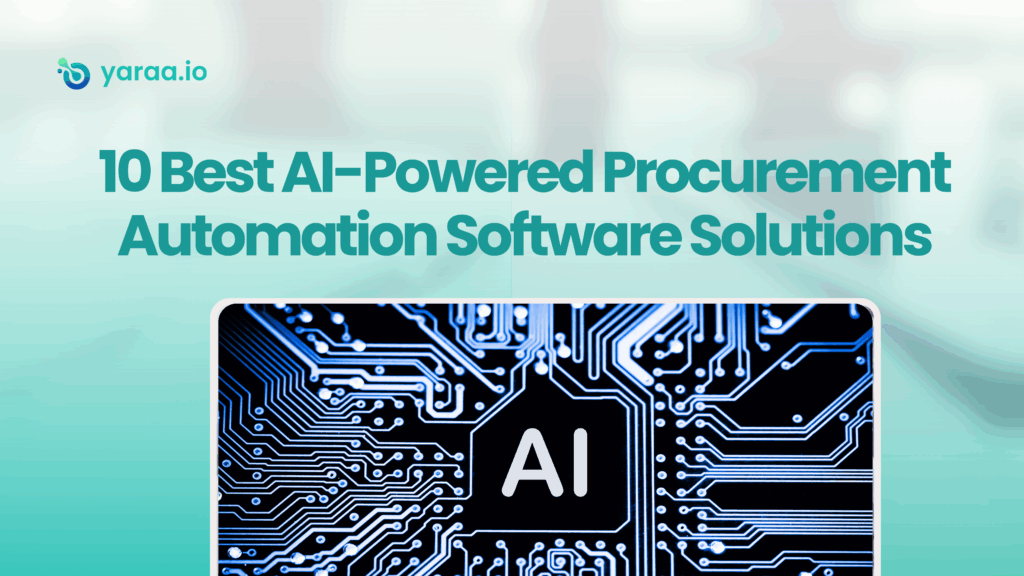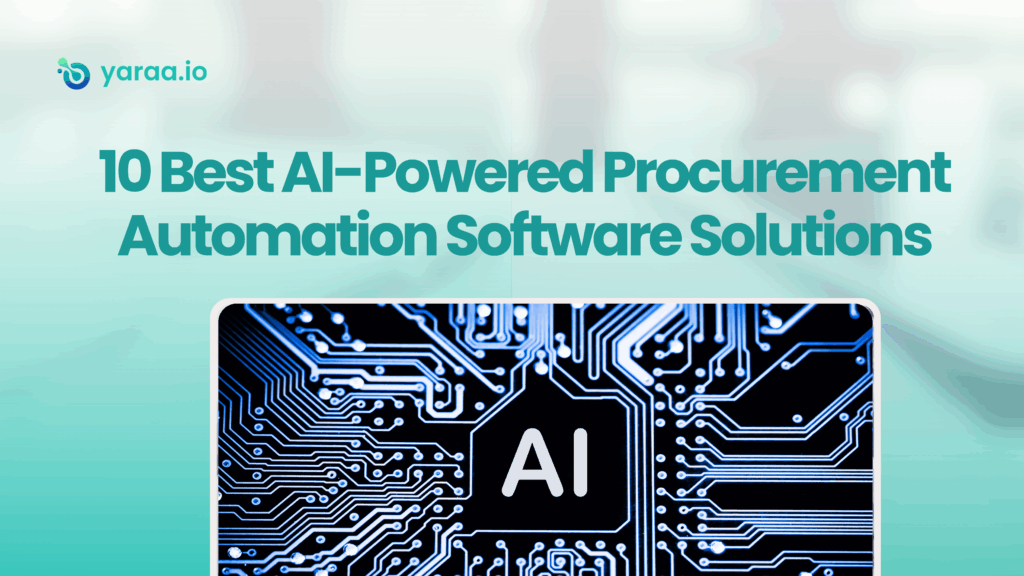
Procurement is a core function in most organizations. It involves sourcing, purchasing, and managing contracts for goods and services from external vendors. It is not just about buying things – it is about ensuring the business gets the right products or services at the right price, on time, and from reliable suppliers.
According to research from EY, automation should be among the top priorities for Chief Procurement Officers, and with good reason. Procurement automation can dramatically reduce process errors, accelerate purchasing cycles, and free teams from repetitive manual tasks so they can focus on more strategic work like supplier negotiation and cost optimization.
In this guide, we will explore the 10 best AI-powered procurement automation software solutions, outline the unique features of each, and share pros and cons to help you make a well-informed decision.
What is Procurement Automation Software?
Procurement automation software uses digital tools and artificial intelligence to streamline tasks such as purchase orders, supplier onboarding, approvals, invoicing, and contract management. Instead of relying on spreadsheets, manual emails, and paper forms, automation platforms manage these processes in a central, secure, and trackable way.
By automating routine procurement steps, organizations can:
- Reduce errors and rework
- Improve compliance and approvals
- Gain better visibility into spending
- Shorten cycle times
- Free procurement teams for higher-value strategic activities
Top 10 AI-Powered Procurement Automation Software Solutions
1. Yaraa.io
Yaraa is Africa’s #1 AI-powered eProcurement platform designed to help businesses automate, optimize, and gain complete control over their procurement processes. From purchase requisitions to supplier management, contract oversight, and payment tracking, Yaraa offers an all-in-one solution built for speed, accuracy, and strategic impact.
Pros:
- Strong AI-driven insights for smarter procurement
- Full automation reduces cycle times by up to 50%
- Improves cost savings through better spend visibility
- User-friendly with intuitive navigation
- Strengthens supplier relationships with transparent communication
Cons:
- Works best when the organization is ready to transition from manual processes
Why Yaraa Stands Out:
- End-to-End Automation: Manage procurement from request to payment without manual bottlenecks.
- Powered Insights: Predict costs, flag risks, and uncover savings opportunities.
- Local & Global Supplier Integration: Connect seamlessly with suppliers in Africa and beyond.
- Custom Workflows: Tailor processes to match your organization’s exact needs.
- Friendly: Approve, track, and manage procurement on the go.
Impact You Can Expect:
- 50% faster procurement cycles
- 30% savings from better spend visibility
- Near-zero errors through automated checks
- Stronger supplier relationships with transparent communication

2. Kissflow Procurement Cloud
Kissflow offers low-code procurement automation from sourcing to payment.
Key Features:
- Strategic sourcing, procure-to-pay, supplier and contract management
- Process builder for designing workflows
- Low-code platform for some customization
- App development tools and pre-built templates
Pros:
- Easy-to-use interface
- Fast onboarding
Cons:
- Customer support response delays
- Performance issues with large datasets
- Limited Android mobile support
- Integration challenges
3. Nintex
Nintex is a process intelligence and workflow automation platform with broad applicability, including procurement.
Key Features:
- Workflow automation for procurement processes
- Process mapping and discovery
- Robotic Process Automation (RPA) for after-hours work
Pros:
- Easy to set up
- Clean interface design
Cons:
- Higher cost than some competitors
- Limited technical support feedback
- Less powerful form design compared to some platforms
4. Keelvar
Keelvar focuses on sourcing, especially for logistics, packaging, and materials procurement.
Key Features:
- Automation for spot buys
- Scalable to handle large sourcing events
- Advanced analytics for decision-making
- API integrations with other systems
Pros:
- User-friendly and easy to adopt
Cons:
- Limited feature set for complex sourcing needs
- Strongest in logistics, not all categories

5. Pipefy
Pipefy automates procurement workflows with AI-driven tools.
Key Features:
- AI automation to extract data from documents
- AI Copilot for building workflows using natural language
- AI agents to answer questions and centralize requests
Pros:
- Improves collaboration and communication
Cons:
- Slow server speeds reported
- Email automation issues
- Scalability challenges
6. Procurify
Procurify specializes in purchasing and accounts payable automation.
Key Features:
- Purchase request and order management
- Budget and contract management
- Vendor management
- Real-time spend tracking
- Expense and approval workflows
Pros:
- Intuitive expense tracking
Cons:
- Occasional technical glitches
- Limited integrations
- Confusing notifications
7. Precoro
Precoro offers procurement process automation for managing requests, approvals, and purchasing.
Key Features:
- Customizable approval workflows
- Purchase order management
- Spend control and reporting
Pros:
- Strong for organizations with high purchase order volumes
Cons:
- Limited integration with accounting systems
- Reporting navigation challenges
- Occasional performance issues

8. Zycus
Zycus is a generative AI-powered procurement platform.
Key Features:
- Custom workflow creation with no-code tools
- AI-powered procurement intake through Microsoft Teams
- Adaptive automation intelligence
Pros:
- Predictive spend analysis using AI
Cons:
- Invoice processing challenges
- Limited API options
- Confusing templates
Read our Popular Post – https://www.yaraa.io/blog/475-the-key-role-of-contract-ownership-in-procurement
9. ProcessMaker
ProcessMaker is a low-code automation platform designed to optimize procurement workflows.
Key Features:
- Intelligent document processing with OCR
- Process intelligence for identifying automation opportunities
- Integrations with core enterprise systems
Pros:
- Strong customer support
Cons:
- Outdated documentation
- Form design and speed issues
10. Payhawk
Payhawk streamlines procurement from request to payment with built-in controls.
Key Features:
- Centralized purchase request management
- Approval workflows to prevent maverick spending
- Automatic three-way matching of POs, receipts, and invoices
Pros:
- User-friendly interface and easy onboarding
Cons:
- Some settings only editable by support team
- Support ticket delays
- Limited analytics depth

Factors to Consider When Choosing Procurement Automation Software
When evaluating solutions, keep these factors in mind:
- Ease of Use – Look for intuitive interfaces and no-code or low-code options.
- Integration – Ensure compatibility with ERP, accounting systems, and supplier networks.
- Customization and Flexibility – Choose software that can scale and adapt to your processes.
- Security and Compliance – Prioritize encryption, access control, and regulation compliance.
- Reporting and Analytics – Opt for real-time insights and predictive analytics.
- Collaboration Tools – Facilitate communication between internal teams and suppliers.
- Automation and AI Capabilities – Ensure automation of routine tasks and AI for strategic optimization.
- Vendor Support – Look for robust training and responsive support.
Conclusion
The right procurement automation platform can transform how your business handles purchasing. By automating repetitive tasks, improving supplier relationships, and increasing visibility into spend, these solutions allow procurement teams to become strategic value drivers rather than just operational support.
If you are ready to explore how automation can work for your organization, book a demo of FlowForma Process Automation to see procurement in action – streamlined, digitized, and delivering measurable results.
Read our Popular Post –https://www.yaraa.io/blog/505-smarter-business-operations-a-modern-guide-to-reducing-hidden-costs
Thanks for reading!
Written by Sam Femi
